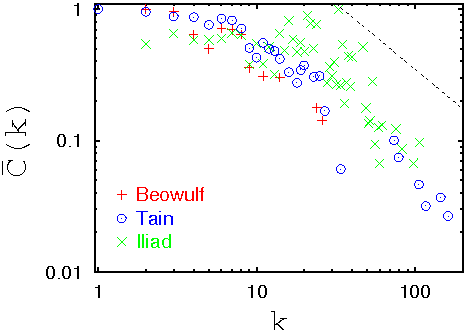Pádraig Mac Carron
Universal Properties of Mythological Networks
Jul 18, 2012



Abstract:As in statistical physics, the concept of universality plays an important, albeit qualitative, role in the field of comparative mythology. Here we apply statistical mechanical tools to analyse the networks underlying three iconic mythological narratives with a view to identifying common and distinguishing quantitative features. Of the three narratives, an Anglo-Saxon and a Greek text are mostly believed by antiquarians to be partly historically based while the third, an Irish epic, is often considered to be fictional. Here we show that network analysis is able to discriminate real from imaginary social networks and place mythological narratives on the spectrum between them. Moreover, the perceived artificiality of the Irish narrative can be traced back to anomalous features associated with six characters. Considering these as amalgams of several entities or proxies, renders the plausibility of the Irish text comparable to the others from a network-theoretic point of view.
* 6 pages, 3 figures, 2 tables. Updated to incorporate corrections from EPL acceptance process
 Add to Chrome
Add to Chrome Add to Firefox
Add to Firefox Add to Edge
Add to Edge